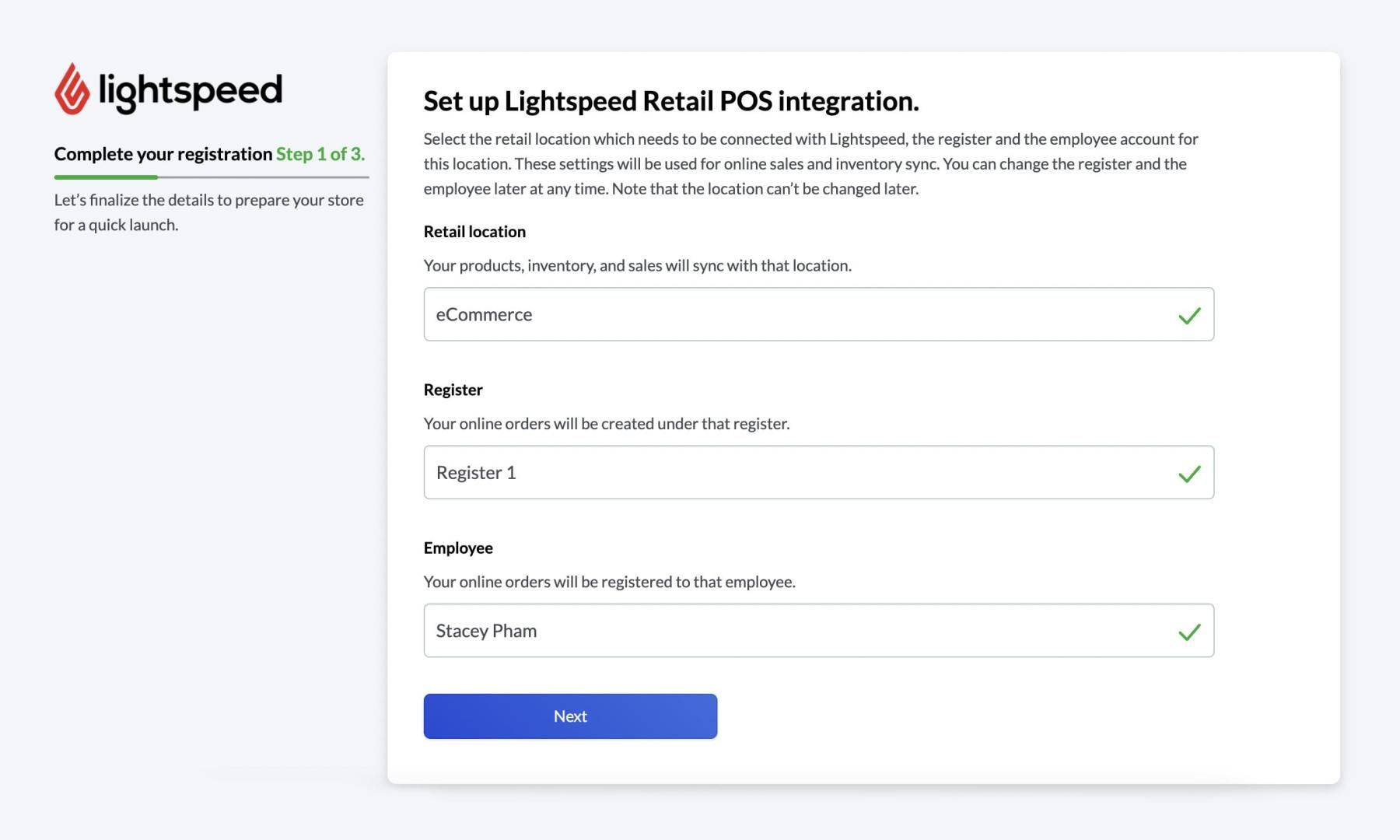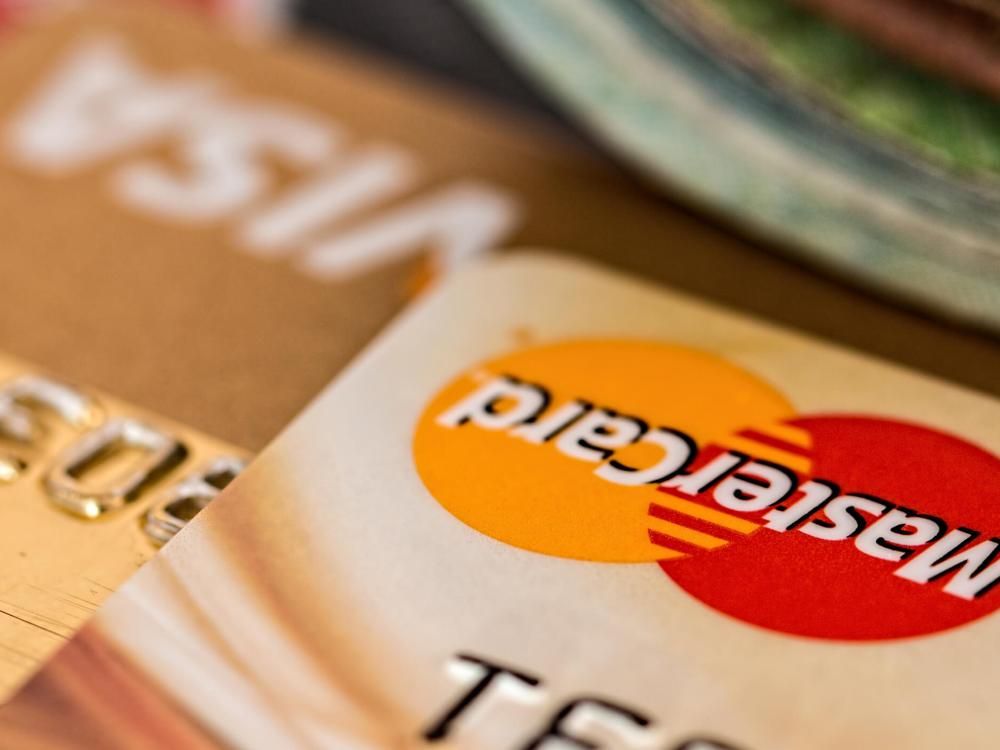
PoS integration: options, steps & benefits
January 4, 2024
- Home
- Industries
- Retail
- PoS systems
- PoS integration
Point-of-sale integration involves connecting a PoS system to devices and other retail software tools. This direct connection enables smooth, real-time data exchange between the systems, thus helping retailers expedite transaction processing, reduce data errors, and increase operational efficiency.
By bridging the gap between the PoS system, disparate business applications, and digital sales channels, brick-and-mortar store owners can accurately track sales, control inventory, manage staff, improve in-store experiences, and provide personalized customer interactions.
Below, we’ll explain how an integrated PoS system works, share integration options for retailers and restaurant businesses, and uncover the payoffs from creating a unified PoS ecosystem.
How do integrated PoS systems work?
Scheme title: An example of PoS integration with hardware and business applications
Although transaction scenarios can vary from business to business, a basic checkout flow involving an integrated PoS system has the following steps.
- To begin a transaction, a cashier at the counter or a customer at a self-service kiosk scans an item’s barcode. The connected display shows item details, quantity, price, as well as subtotal and total amounts.
- Then, as soon as the customer chooses to pay with cash or a payment card, the PoS system initiates either cash drawer opening or credit card reader activation. In a cashless payment, the credit card reader contacts the payment processing service for payment authorization and sends a confirmation to the PoS system to complete the transaction.
- Simultaneously, the PoS system sends inventory and sales data to the accounting software, inventory management system, and ERP, where it’s recorded and updated.
- If a retailer also sells products through digital channels, an integrated PoS system syncs catalogs, orders, and inventory data with the online store in real time.
Common PoS integration options
We can integrate your PoS system with a web-based or mobile ecommerce solution and ready-to-use business applications through existing APIs or connectors. We can also build custom connectors that are fully tailored to your unique software and workflows. Here is a rundown of useful PoS integrations for companies of different business verticals, sizes, and sales models that can streamline daily operations, facilitate sales, and boost overall business efficiency.
Hardware options
PoS systems can either connect to devices from various brands or integrate exclusively with proprietary equipment. Retail hardware and equipment connected to a PoS system automate data input and output, speed up transaction processing, and improve customer experience.
PoS terminals
Connecting a PoS application with a stationary or handheld terminal, businesses can accept orders and in-person payments, accurately process transactions, and seamlessly transmit transaction data to PoS software and other integrated systems.
Credit card readers
With an integrated credit card reader, companies can faster ring up customers and complete transactions. The device captures information from a customer’s credit or debit card, sends it to the merchant’s payment processing service for authorization, and then communicates payment confirmation or decline to the PoS system to finalize the transaction.
Cash drawers
Companies that accept cash payments can link their cash drawers directly to the PoS system to track cash-ins and cash-outs, reconcile cash balances, manage cashier permissions, and control cash drawer opening.
Barcode scanners
Retailers use barcode scanners to identify and quickly process items at checkout, look up prices, automatically apply discounts for specific products, pick stock for shipping, and update stock levels in real time. Integrated barcode scanners can also be programmed to scan IDs for age verification and loyalty program cards for reward assignment.
Additional displays
For better customer engagement and transparent checkout, merchants can equip their PoS setup with a second customer-facing display to show transaction details, suggest payment methods, put up promotions, and ask for interactive feedback. In restaurants, additional screens can be used for customer tipping or serve as kitchen displays with a real-time list of orders for the staff.
Printers
A printer linked to a PoS system allows users to print sale receipts, order tickets, coupons, end-of-day sales summaries, and other documents for accounting.
Software integrations
Regardless of the industry or company type, most merchants use similar software tools, most of which should be connected to PoS.
Payment processing
If your PoS system doesn’t offer built-in payment processing capabilities, you can integrate it with a third-party service to enable various payment methods, including credit card, mobile, and contactless payments. An integrated payment solution significantly accelerates checkout and makes sales reconciliation easier and more accurate.
The PoS-ERP integration centralizes sales, inventory, customer, and financial data management across the company and provides valuable insights for better decision-making and strategic planning.
Inventory management
Many off-the-shelf PoS solutions offer basic inventory management functionality like creating SKU numbers and monitoring stock levels. However, an inventory management integration expands your PoS capabilities with real-time and remote tracking of your entire inventory across channels and locations, customized stock notifications, and sales trend analysis.
The integration captures important customer data from the PoS and sends it directly to the CRM, helping segment customers for more targeted promotions, identify high-value and at-risk customers, and personalize interactions.
Accounting
Although PoS systems generally gather basic transaction and daily reconciliation data, integrating it with the accounting software allows businesses to sync more specific information about sales, returns, gift card redemption, staff activity, payroll, and taxes, while maintaining accurate financial records and streamlining reporting.
Employee management
An employee-scheduling PoS integration creates a centralized, automated system enabling retail teams to check and swap shifts, request time off, and track their performance. Managers can set staff schedules, provide employees access to certain PoS functions, and track work processes more closely to ensure regulatory compliance.
Email marketing
With email marketing integrations, retailers can better engage their customers by automatically sending digital receipts, personalized product recommendations, invitations to in-store events, newsletters, and promotions.
Loyalty program apps
A loyalty program-POS integration gives businesses an opportunity to track customer data and provide discounts, offer personalized promotions, and encourage new purchases by redeeming rewards.
Industry-specific integrations
Retailers and food and beverage services can opt for different PoS integrations to accommodate their specific business needs.
Retail
Merchants can connect their online store with the PoS system in a physical location to enable multichannel sales, manage online and offline sales from a single place, and sync payment, inventory, and customer data.
Order fulfillment
By integrating the PoS system with the order management software, businesses can consolidate orders from different sales channels in real time, manage in-store pickup and curbside delivery orders, accurately handle returns and exchanges, and quickly update customers on their order statuses.
Customer service
Through connected customer service software, sales associates can create tickets right from the PoS system. At the same time, the support team can access each customer’s purchase history to better understand the essence of their request and quickly resolve the issue.
Age verification
An integrated age-verification tool helps retail businesses sell age-restricted products like tobacco and maintain compliance with age regulations.
Restaurants
Menu management
A menu management-PoS integration will allow restaurant managers to centralize in-house and online menu item changes, automatically update inventory availability, calculate recipe costs, and promote more profitable menu items.
Online ordering
An integrated online ordering system captures orders from online channels in the restaurant PoS, shows payments made online, and ensures timely order processing and shorter waiting times for customers.
Food delivery management
With an integrated food delivery management system, food businesses can send orders from multiple channels directly to the PoS system, minimize order errors, and track delivery statuses in real time.
Reservation management
Integrated reservation software sends bookings to your PoS, helping you easily manage tables and waitlists, organize kitchen loads, and plan stock replenishment.
Get a holistic view of your operations with an integrated PoS
Integration options for popular PoS platforms
Commonly used cloud-based PoS platforms provide rich capabilities for connecting ready-to-use solutions, popular third-party services, and custom applications.
Clover
The Clover platform provides a basic set of point-of-sale applications for retailers and restaurants. It can replace any native app with a third-party application to meet their more specific business needs.
- Integration of custom apps with Clover PoS systems
- App approval and publishing at Clover App Market
- REST API for exchanging data from Clover merchants’ web apps
- Ecommerce APIs and SDKs for providing PCI-compliant payment experiences
- Clover payment plugins for supporting Adobe Commerce and WordPress ecommerce sites (for US and Canada only)
- Semi-integrations with REST Pay, Remote Pay, and Clover Android
Scheme title: Clover platform & third-party apps
Data source: docs.clover.com — Clover platform
Square
Square offers ample opportunities for integrating your PoS system with custom solutions or a listing on the Square App Marketplace.
- Square APIs for integration with Square’s first-party product ecosystem
- A wide range of APIs for payment, commerce, customer, team, and merchant operations management
- Square Bridge, an integration application for synchronizing data between Square PoS and third-party business software
- Direct integration with Oracle NetSuite and Microsoft Dynamics 365 Business Central
- Payments extension applications
- Custom app integrations through Solution Partners
- Square App Marketplace

Image title: Square Bridge interface
Image source: developer.squareup.com — Square Bridge
Lightspeed
In addition to a wide array of pre-built native add-ons, Lightspeed offers numerous services for retail and restaurant businesses from approved partners and provides toolkits for creating custom integrations.
- Many out-of-the-box integrations with business apps from featured partners
- Lightspeed Retail POS APIs for creating any third-party integrations
- Pre-built adds-on and integrations for connecting your PoS with ecommerce, financial services, loyalty apps, accounting, analytics, and subscription tools
- Ready-to-use Mailchimp and Quickbooks integrations

Image title: Set up Lightspeed Retail POS integration page
Image source: retail-support.lightspeedhq.com — Connecting with eCom (E-Series)
Toast
An all-in-one restaurant management platform, Toast offers integrations for its point-of-sale system with the most widely used restaurant software.
- A diverse range of pre-built integrations from 100+ partners, including reservation, inventory, loyalty, marketing, delivery, and labor apps
- REST web service APIs for customizing the Toast platform with necessary integrations, such as cash management, restaurant configuration, credit cards, gift cards, labor, loyalty, menus, orders, stock, and partners
1
Application
Apply for integration partnership
Strategic interest is vetted
2
Partner agreement
Business terms are presented
Partner agreement is signed
3
Certification
Interactive integration demo
Certification call scheduled
4
Beta phase
Integration tested with 3-5 restaurants
Customer feedback collected and marketing materials are developed
5
Discovery
Business opportunity and technical readiness vetted
Optional discovery call is scheduled
6
Development kickoff
Sandbox credentials and Toast integration checklist are provided
7
Alpha phase
Production credentials are provided
Customer feedback is collected and logs are reviewed
8
General availability
Integration is launched on Toast
Marketing materials avaliable
Scheme title: Integration development milestones
Data source: doc.toasttab.com — Integration partnership process
PoS integration steps
There are some common stages companies typically go through when integrating their PoS solution and other business software.
1
Analysis
Requirements analysis, selection of necessary integrations
2
Planning
Selection of integration method (APIs, middleware, or custom connectors), drawing up an integration plan
3
Development
Coding, configuring connectors, data mapping, setting up data exchange workflows
4
Testing
Testing various scenarios in a controlled environment, error handling, debugging, and security assessment
5
Deployment
Deployment planning, target environment verification, deployment execution, and confirmation
PoS integration benefits
Streamlined operations
Streamlined operations
- Minimized manual data entry and human errors
- Time-saving due to automated workflows
- Real-time data synchronization
- Centralized sales, order, inventory, customer, and product management
- A better view of retail or restaurant operations
Better customer experience
Better customer experience
- Multiple payment options
- Faster checkout
- Experience personalization
- Efficient customer service
- Real-time order tracking
Improved stock control
Improved stock control
- Optimized stock levels
- Prevention of overselling or stockouts
- Better inventory visibility
- Fewer backorders
Reduced costs
Reduced costs
- Increased staff productivity and optimized allocation
- Loss prevention
- Data-driven decisions based on detailed reports
- Better regulatory compliance
- Faster staff training
Valuable insights
Valuable insights
- Visibility into sales trends and patterns over time
- Demand forecasting
- Tracking of customer preferences and shopping habits
- Store, staff, and product performance monitoring
- Bottleneck identification across teams
Omnichannel experience
Omnichannel experience
- Consistency across retail stores and digital sales channels
- Flexible ordering and order fulfillment options
- Omnichannel marketing campaigns

Gain better control of your operations with PoS integration
Modern point-of-sale systems already help business owners to streamline sales, effectively manage teams, and improve customer satisfaction and retention. But connecting a standalone PoS system to the rest of the company’s software can bring even more benefits in the long run, as it helps unify diverse administrative and customer-facing processes to create a cohesive, well-managed retail environment. If you’re ready to uncover the full potential of your business tools, turn to Itransition for smooth and secure PoS integration.

Looking for a technology partner for PoS integration?
PoS integration FAQs
What integrations should I get for my PoS?
The choice of integrations depends on your business type (e.g., retail, hospitality, rental) and what native features your PoS system already has.
How much do PoS integrations cost?
The cost of point-of-sale integrations includes monthly or annual fees for using integrated applications and the cost of software development services for connecting different types of software. PoS apps generally cost from $0–$300 a month, with a few reaching $1,000 a month. The cost of integrating your PoS depends on the type of PoS system, the number of integrations, native API or connector availability, the cost of middleware (if needed), and the necessity to build custom integrations.
What are the risks of not having a PoS integration?
Businesses operating without an integrated PoS can face several challenges that ultimately affect their bottom line:
- Slower service
- Inconsistent inventory data leading to missed sales and higher inventory handling costs
- Complicated accounting with a high risk of reporting mistakes
- Limited customer insights
- Staff inefficiency
- Lack of competitive advantage
Will integrations make my PoS system less secure?
PoS integrations recommended by the providers themselves are generally safe to install and use. For open-source PoS systems, integration software can be developed by community members. In this case, be sure to check integration compatibility and user reviews before installing. However, improperly implemented integrations can pose security risks to your PoS data. Therefore, we recommend hiring a reliable technology company that follows the best security practices to implement your integrations.
What is the difference between PoS integration & customization?
PoS integration means connecting different retail software solutions with your PoS to ensure seamless data exchange.
Integrations examples
- Payment processing services
- Inventory management
- CRM
- Ecommerce platforms
PoS customization involves modifying your PoS to tailor it to your business needs.
Customization examples
- User interface branding
- Adding new features
- Adjusting out-of-the-box workflows

Case study
Payment processing system redevelopment
Itransition's team revamped a payment processing system for an established payment transaction service provider.

Insights
Beacons in retail: top use cases, benefits, and limitations
Learn how Bluetooth beacons help improve proximity marketing and engage customers in retail. Explore beacons’ functionality, applications, and limitations.

Insights
IoT in retail: 10 use cases, benefits, and challenges
Explore the concept of IoT in retail, view the most prominent technologies and their applications, and uncover the top advantages and challenges.

Case study
Technology partner for digital marketing strategy support
Itransition became a technology partner for a global beverage manufacturer to build digital presence for 14 of the customer’s brands globally.